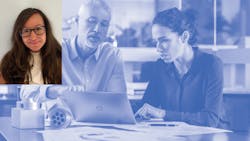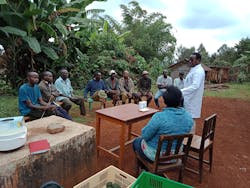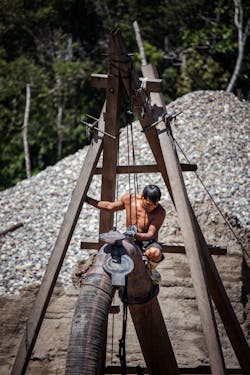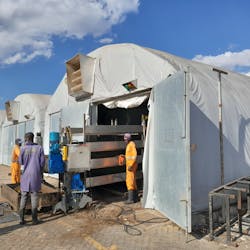With demand for sustainability and engineering executives on the rise, Iana Aranda fits the profile of a woman forging change.
The senior director of Engineering for Sustainable Development at the American Society of Mechanical Engineers (ASME), Aranda harnesses her mechanical engineering background to support global sustainable development by leading a team that operates at the intersection of engineering and sustainable development. She leans in to ASME’s climate strategy and what the association is doing to advance solutions to the climate crisis.
“I manage a portfolio of programs and platforms that advance the Sustainable Development Goals as envisaged by the United Nations,” Aranda said. “In terms of practical application, we specifically [leverage] the engineering skill set and expertise to direct a diverse global workforce towards how they can participate, how they can contribute. We are really architecting new initiatives, new programs, developing the opportunities for these engineers to participate and get skilled in and how to contribute.”
Sustainability Engineers are Up and Coming
The market pull for sustainable engineering roles is on the rise, confirmed Aranda. ASME hosted a stakeholder summit early in 2022 to probe this demand and to consider the intersections of sustainability in engineering.
The demand for sustainability in engineering solutions, Aranda pointed out, is further related to President Biden’s Bipartisan Infrastructure Deal and the measure of investment being made in climate action and technology associated with advancing climate action. Given the engineers’ critical role in developing solutions, products and services associated with technological advancement and the bottom line for many of these corporations, a move in this direction requires attention.
The shift has also been observed in academia, where students—the incoming engineering workforce—are interested in having meaningful and purpose-driven work. “They want to do this as their paid job, which is entirely sensible,” Aranda said. “They want to be rewarded for their time and talent and then, of course, we’re also seeing this from the perspective of regulatory agencies.”
READ MORE: Finding Opportunities in Sustainability-Driven Production
The Design Engineer
Aranda has come a long way from her days as junior design engineer role in 2001, when she designed hardware and manufacturing specifications for electronic and optical systems using Solid Edge (Siemens) solid modeling software, or the time she was hands-on with SolidWorks (Dassault Systèmes) modeling software to provide engineering design and development of optomechanical, electromechanical and in-vivo imaging hardware for biomedical research facilities.
These days her daily routine is as likely to revolve around budgeting as it is to meeting with global collaborators to dissect the relevance of design for manufacturability methodologies in low-resource settings, such as sub-Saharan Africa, where taking work away from the economy will likely have negative implications.
For those who must know, her refined methodology when working with ventures in low-resource settings with limited access to advanced manufacturing and limited engineering resources includes location-specific questions, such as: How do you ensure that you design for manufacturability? How do you identify the right manufacturer in sub-Saharan Africa?
“To ensure that you are manufacturing products cost-effectively, you are likely going outside of the continent,” Aranda said.
At stake are the short- and long-term implications for local communities. Aranda outlines the thought process: “Building out a [manufacturing] methodology that allows us to ask the right questions, to really pinpoint those issues, those hurdles, and then start to consider where might there be workarounds, or processes, or ways for them to partner, or even approaches that may be transferred from elsewhere that they can leverage for the benefit of their venture.”
READ MORE: How Sustainability Permeates the Work of an Engineer
Building on Success
The success Aranda brings to her current role is palpable, but represents a mere sliver of her career accomplishments and victories along the way. She led the development of Engineering for Change (E4C) on behalf of its co-founders ASME and other leading engineering societies. The digital platform educates and activates the international technical workforce by providing resources and access to expertise to accelerate the development of solutions and infuse engineering into sustainable development. E4C today services more than 1 million engineers, scientists and technologists around the globe.
Aranda is also the mastermind behind a highly competitive E4C fellowship of 200 fellows per year. The program enabled her to promote diversity and empower engineers early in their careers, as well as to establish an operational model and programs.
The E4C platform works by exposing engineers to critical issues across sectors (including water, sanitation, energy and health), offering training through online programs and by supporting organizations with their sustainability goals. “For instance, we augment their workforce with our subject matter experts, our fellows, staff and partners,” Aranda explained.
In one impact services project, Conservation X Labs, the work focuses on preventing the sixth mass extinction. Working with USAID, the program aims to address negative social and environmental impacts in artisanal small-scale mining in the Amazon region.
“Artisanal miners are flying under the radar of regulatory agencies, often trying to extract gold throughout the Amazon region,” Aranda said. “This requires using methods to extract gold that [are] incredibly detrimental to the environment, local and indigenous communities. And that includes using mercury to bind gold flecks, for example. This has demonstrated to be absolutely devastating to that region.”
CXL was tasked with sourcing technological innovators to deliver solutions that address the crisis. The team developed an accelerator, the Amazon CoLab, as part of their advancement model, which provides technical guidance and mentoring to business leaders, as well as guidance on how to scale innovations further and enter the market.
E4C’s experience with social entrepreneurship and supporting innovators around the globe was instrumental in helping support Amazon CoLab by connecting their cohorts to “the right people, right networks,” and by helping them think through their scaling strategies in order to get them on the track to succeed.
READ MORE: Sustainability is the Word at Pack Expo
Grassroots to Greatness
Aranda credits her success only partly to being prepared to put out ideas and watch them grow. She said none of the milestones in her career could have been achieved without her mentors and the staff she worked with and who mirrored the desire she had to practice engineering differently. “It started with my first boss, who took a bet on me and allowed me a lot of responsibility; she allowed me to work with her and believed in me,” she said.
Being at the grassroots level of an initiative that has grown to be massive and to rise to the forefront of the field has its rewards. “It’s been truly incredible to see how E4C, for example, has grown from an idea in 2009 to a platform that encompasses more than a million people around the world,” Aranda said. “I’ve had more than 200 fellows and worked with an incredible array of partners. We’ve had true opportunity to effect change.”
Most recently, she helped to assemble a strategic advisory group, ASME’s Committee on Sustainability, which she now facilitates. Aranda will also attend COP28 on behalf of ASME.
Still, the path to success is not always smooth. “When you are in uncharted territory, you have to make your own plan,” said Aranda. “Some things work and some things don’t. In the unknown, you have to be comfortable in discomfort.”
Editor’s Note: Machine Design's WISE (Workers in Science and Engineering) hub compiles our coverage of workplace issues affecting the engineering field, in addition to contributions from equity seeking groups and subject matter experts within various subdisciplines.
About the Author
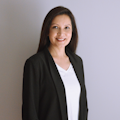
Rehana Begg
Editor-in-Chief, Machine Design
As Machine Design’s content lead, Rehana Begg is tasked with elevating the voice of the design and multi-disciplinary engineer in the face of digital transformation and engineering innovation. Begg has more than 24 years of editorial experience and has spent the past decade in the trenches of industrial manufacturing, focusing on new technologies, manufacturing innovation and business. Her B2B career has taken her from corporate boardrooms to plant floors and underground mining stopes, covering everything from automation & IIoT, robotics, mechanical design and additive manufacturing to plant operations, maintenance, reliability and continuous improvement. Begg holds an MBA, a Master of Journalism degree, and a BA (Hons.) in Political Science. She is committed to lifelong learning and feeds her passion for innovation in publishing, transparent science and clear communication by attending relevant conferences and seminars/workshops.
Follow Rehana Begg via the following social media handles:
X: @rehanabegg
LinkedIn: @rehanabegg and @MachineDesign
